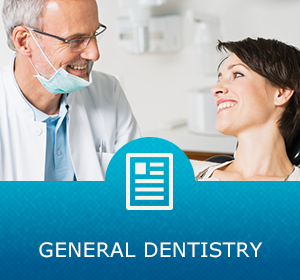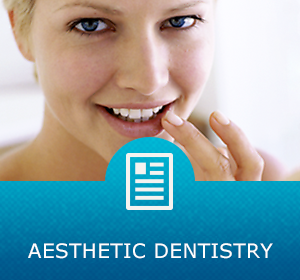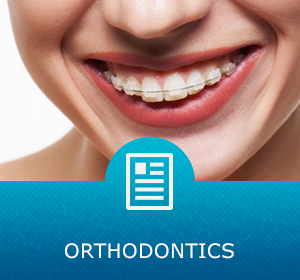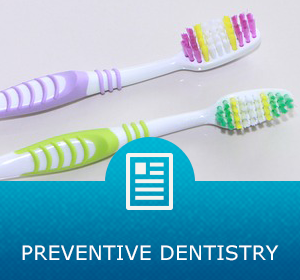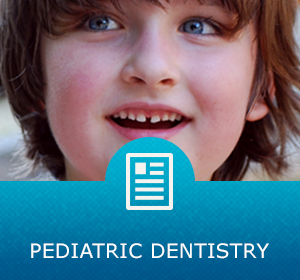Dental care covered and not covered by health insurance
General dentistry
General dentistry refers to general treatment of tooth decay and gum disease in a dental clinic instead of specialized treatment such as orthodontics and implantation. Many general dentistry services are covered by health insurance, so many people think of general dentistry as dental care covered by health insurance. Even though the treatment is the same, some services are not covered by health insurance depending on the materials used or other aspects.
Treatment of tooth decay
Tooth decay is a disease where teeth are dissolved by acid. A film of bacteria called "plaque" adheres to the teeth. The bacteria ingest sugars contained in food and produce acid. Tooth decay is caused when this acid dissolves teeth. The dissolution of teeth is a process referred to as "demineralization." Healthy teeth are restored when the demineralized portion is repaired through a process referred to as "remineralization." These processes are usually balanced. If, however, bacteria frequently ingest sugars or if the oral environment promotes acid production by plaque, then demineralization proceeds faster than remineralization can catch up, and tooth decay progresses.
Stages of tooth decay and treatment
The progression of decayed teeth is classified into five stages, CO to C4, with "C" standing for "Caries (tooth decay)."
| Extent of progression | Symptoms and treatment |
|---|---|
| CO: incipient caries |
|
| C1: moderate caries |
|
| C2: advanced caries |
|
| C3: severe caries |
|
| C4: last stage |
|
The more tooth decay progresses, the more prolonged treatment and the more expensive treatment will be, posing a greater burden on patients. The burden will be minimal if tooth decay is treated in the early stages. If you feel slight discomfort with your teeth, immediately see your dentist.
Note: The descriptions of treatment are for reference only. Actual treatment of the same symptoms may differ from the description depending on the patient’s condition.
Prevention of tooth decay
The most important thing in the prevention of tooth decay is to eliminate its cause and prevent its progression. Please be sure to practice prevention routinely.
Eliminate the cause of tooth decay by brushing
- Carefully brush your teeth before bedtime
- Remineralization is less effective while you are asleep due to less secretion of saliva. This means that tooth decay easily progresses while you are asleep. To avoid this, carefully brush your teeth particularly before bedtime in the day.
- Pay attention to misaligned teeth
- Teeth that are misaligned, like crowded teeth, are particularly vulnerable to tooth decay. Fully remove debris from cracks and crevices using dental floss.
Dietary instructions to prevent the progression of tooth decay
- The frequency of snacks, rather than the amount, matters
- The more frequently you eat snacks, the more tooth decay The more frequently you eat snacks, the more tooth decay progresses because remineralization cannot catch up with demineralization. Avoid grazing on snacks. Instead, eat meals at regular times.
- Do not eat or drink immediately before bedtime
- Less saliva is secreted while you are asleep, so remineralization cannot catch up if you eat or drink immediately before bedtime. Avoid eating or drinking immediately before bedtime because it merely encourages bacteria.
Application of fluorine
Prevention of tooth decay with fluorine
Fluorine is an element present in nature. Fluorine is highly reactive (it strongly attracts electrons), so it is present not as an element but when it has bonded with other substances as fluorine compounds (collectively referred here to as "fluorine"). Fluorine is not a special substance, but is contained in soil, seawater, vegetables, fruit, fish, algae, and the tissues of plants and animals. Fluorine enhances resistance to tooth decay, so it is used around the world to prevent tooth decay. We naturally ingest fluorine from our meals every day, but they do not provide a sufficient amount of fluorine to prevent tooth decay. The application of fluorine to the tooth surface helps the intake of calcium from saliva into teeth, thus making them stronger.
Functions and effects of fluorine
The enamel that covers the tooth surface is the hardest part of the human body, but is dissolved by acid produced by bacteria. When fluorine is taken up by the enamel, the enamel is better able to resist dissolution by acid. The application of fluorine also promotes the remineralization of incipient caries so that they resolve on their own. Fluorine has the following effects.
- Suppresses the production of acid by bacteria
- Makes teeth stronger and more resistant to dissolution by acid
- Promotes the adhesion of calcium in saliva and helps with remineralization
Uses of fluorine to prevent tooth decay
The use of fluorine to prevent tooth decay is common, and this method is considered effective by most dentists around the world. The application of fluorine at a dental clinic and other uses of fluorine to prevent tooth decay are described below.
- Application of liquid fluorine at a dental clinic
- Brushing one's teeth with a toothpaste containing fluorine
- Washing out one’s mouth with a mouth rinse containing fluorine
Aesthetic dentistry
Aesthetic dentistry refers to dental care intended to produce an aesthetic dental appearance by means such as whitening the teeth or making a silver crown less conspicuous. Oral functions, such as chewing and speaking, should be fully maintained rather than merely producing an aesthetic dental appearance.
Orthodontics
Orthodontics refers to treatment of malocclusion (unsightly or misaligned teeth, such as an overbite, an underbite, or crooked teeth) with orthodontic appliances. Orthodontics seeks to improve not just the aesthetics of teeth alignment but also to prevent tooth decay and gum disease and to keep the patient healthy.
Orthodontics
Types and characteristics of malocclusion
"Malocclusion" refers to unsightly or misaligned teeth, such as an overbite, an underbite, and crooked teeth. There are several types of malocclusion, and each type has conspicuous characteristics.
| Type | Characteristics |
|---|---|
| Maxillary protrusion Commonly referred to as: an overbite |
The upper dentition or the entire upper jaw protrudes. The main causes include the overgrowth of the upper jaw, the undergrowth of the lower jaw, and thumb sucking. |
| Mandibular protrusion Commonly referred to as: reversed occlusion or an underbite |
The lower teeth protrude further than the upper teeth. There are congenital causes such as heredity, as well as acquired causes such as tongue thrusting (a habit of pushing the lower front teeth with the tongue). |
| Crowded teeth Commonly referred to as: crooked teeth or snaggle teeth |
Teeth are unevenly aligned or overlap. The main cause is that there are more teeth than the jaw can contain. |
| Open bite | The upper and lower front teeth do not touch even though the back teeth do. The main causes include tongue thrusting, thumb sucking, and breathing through the mouth. |
| Overbite | The upper and lower teeth severely overlap and the lower front teeth are not visible. The main causes include the downward overextension of the upper front teeth and a small lower jaw. |
| Spaced dentition | There are many gaps between the teeth. The main causes include teeth that are too small for the jaw and too few teeth. |
| Median diastema Commonly referred to as: a gap between the teeth |
There is a gap between the front teeth. The main cause is that the jaw is too large, providing too large a space for the teeth to grow. |
Problems with malocclusion and the necessity for orthodontic treatment
If left untreated, malocclusion negatively affects the patient physically and mentally, causing various problems.
- The patient develops an inferiority complex regarding his or her appearance and is distressed when interacting with others.
- The risk of tooth decay and gum disease increases due to difficulty brushing and many areas are left unbrushed.
- Articulation is unclear, causing difficulty particularly when pronouncing a foreign language.
- The patient's chewing power diminishes, causing a burden on the digestive organs since food is not adequately chewed.
- The jaws move inefficiently when chewing, applying excessive force to the jaw joints and shoulders, causing headaches, stiff shoulders, and other problems.
Preventive dentistry
Preventive dentistry is aimed at preventing the possible causes of oral problems, such as tooth decay and gum disease. A dental clinic is not a place to visit after you have developed tooth decay but a place to visit to prevent the development of tooth decay, so periodically visit a dental clinic even if you do not have any abnormalities. You should undergo a dental examination and receive brushing advice so that you can maintain your oral health and live with your teeth throughout your lifetime.
PMTC
Even if you make a habit of brushing your teeth after each meal, some areas will inevitably be left unbrushed. Moreover, tartar (plaque that has hardened due to the adhesion of calcium in saliva) cannot be removed by brushing. If left untreated, plaque and tartar can cause tooth decay and gum disease.
To avoid this, PMTC is available. PMTC stands for "Professional Mechanical Tooth Cleaning," which refers to the removal of plaque and tartar that cannot be removed through brushing by the patient, and it is performed by a dentist or a dental hygienist in a dental clinic. Oral health maintenance is promoted by removing tartar using an instrument called a "scaler" and by removing plaque and discoloration on the tooth surface using specialized instruments and a polish containing fluorine. Oral health cannot be maintained just by daily care at home. Oral health can only be maintained by both at-home care and specialized care at a dental clinic.
Pediatric dentistry
Pediatric dentistry helps with the healthy growth of children from a dental perspective through the treatment and prevention of tooth decay mainly in children before their permanent teeth come in. As a parent, have you left your child’s tooth abnormality untreated since his or her baby teeth will be replaced with permanent teeth? An abnormality in baby teeth can negatively affect the permanent teeth beneath them. Even if there are no abnormalities, please visit our clinic once your child’s baby teeth start to come in.
Pediatric dentistry
Differences between pediatric dentistry and general dentistry
Unlike adults, children grow every day. In addition to mental and physical growth, their teeth and jaws also grow. Given these changes, different treatments are required for children than in adults. We identify the characteristics of the teeth and jaws of each child and perform treatment in consultation with their parents so that future problems will be prevented.
Causes of tooth decay in children
Baby teeth usually start to come in at around the age of five or six months, and a child has all of his or her baby teeth at around the age of three years. Baby teeth have different characteristics than permanent teeth and are considered more vulnerable to tooth decay.
- Soft
- Baby teeth have enamel (the surface of the tooth) and dentin (the body of the tooth) that are half as thick as the enamel and dentin of permanent teeth. The enamel is also soft and prone to dissolution by acid.
- Limited regenerative capacity
- Teeth are repaired through remineralization (returning the dissolved portion to its original state), but baby teeth are considered to have limited remineralization.
- Collection of food particles
- Baby teeth have more and deeper dental grooves than permanent teeth. Therefore, food particles more easily collect and many areas are left unbrushed. This creates an environment that promotes bacterial proliferation.
In addition to these characteristics, children are not able to effectively brush their teeth themselves, leaving many areas unbrushed. This means that toothbrushing by children is also a cause of tooth decay. The subsequent risk of tooth decay is considered to decrease if tooth decay in a child is prevented until the age of three years. Until then, parents should carefully brush their child's teeth. Even if children are able to brush their teeth themselves, parents should give their teeth a final brushing so that no areas are left unbrushed.
The negative effects of tooth decay in baby teeth on permanent teeth
- Misaligned teeth
- Baby teeth function as indicators for the proper emergence of permanent teeth. If a baby tooth is lost due to tooth decay or other causes, the permanent tooth cannot identify and come in at the correct position. This results in misaligned teeth.
- Bad teeth
- If tooth decay in baby teeth progresses until pus collects beyond the tooth root, it may dissolve the enamel of the permanent tooth lying beneath the baby tooth. This results in a permanent tooth of poor quality.
Prevention of tooth decay in children
Application of fluorine
Fluorine enhances resistance to tooth decay. The application of fluorine to the tooth surface makes the enamel more resistant to dissolution by acid, thereby making the tooth stronger. Fluorine has the following specific effects.
- Suppresses the production of acid by bacteria
- Makes teeth stronger and more resistant to dissolution by acid
- Promotes the adhesion of calcium in saliva and helps with remineralization
Fluorine should be applied not just once but periodically (three or four times annually) so that it is fully effective.
Sealant
Plastic sealant is used to fill in dental grooves and prevent tooth decay especially in the back teeth, which are prone to tooth decay. Sealant use does not require scraping of the teeth, but the sealant may come off depending on the shape of the tooth. In such an event, plaque can easily collect at the border of the remaining sealant and the tooth, increasing the risk of tooth decay. Periodic examinations should be undergone to make sure that the sealant is still in place.
麻酔
歯科治療は「怖い」「痛い」というイメージを持たれがちです。イメージだけではなく、実際に「治療が嫌だ」という方がほとんどではないでしょうか。「嫌だけれど我慢できる」という方から「通常の虫歯治療すらしたくない」という方までさまざまだと思いますが、後者の場合、手術が必要なインプラント治療や親知らずの抜歯などを行なうときの緊張や恐怖心は、並大抵ではないでしょう。当クリニックではそのような方を対象に、緊張や恐怖心をなくし、リラックスした状態で治療を受けていただけるよう『全身麻酔』と『笑気吸入鎮静法』を導入しています。
全身麻酔
『全身麻酔』は、意識を失わせて全身の痛みの感覚を麻痺させる方法で、『静脈麻酔法』(麻酔薬を静脈内に投与する方法)と『吸入麻酔法』(肺から吸入する方法)があります。どちらにも脳の活動を抑える働きがあるため、全身の痛み感覚を麻痺させることができます。静脈麻酔法は麻酔の導入(麻酔薬を投与してから麻酔の維持に移るまで)に用いることもあります。麻酔中は血圧、心拍数、心電図、体温などを計測・記録し、変化に適応した処置を行なえるよう全身の状態を観察しながらしっかりと管理を行ないます。なお、歯科の全身麻酔では気道を確保するための気管挿管や人工呼吸を行ないます。全身麻酔を行なった当日は日帰りが可能ですが、状態によって1日だけ入院していただくこともあります。
Second opinions
Before undergoing treatment, many patients wonder if the proposed treatment is actually suitable for them or if there might be other therapies that suit them, and it might be difficult to decide on a treatment without more expert advice. In such cases, patients may seek a second opinion from another dentist so that they can select a suitable dentist and treatment.
The importance of a second opinion
Treatment closely interacts with a patient's body and health, and one could say that a treatment will affect the rest of their lives. If a patient undergoes treatment despite having reservations or unresolved concerns, a favorable outcome cannot be achieved no matter how good the dentist may be. A favorable outcome should be achieved by building an amicable relationship with a reliable dentist so that the patient will not have regrets after treatment.
When to seek a second opinion
When should a patient seek a second opinion? A second opinion will not cause a
substantial difference in the results of treatment covered by health insurance
because therapies and treatment costs are specified in advance. However, the
treatment policy, costs, and other specifics of treatment not covered by health
insurance vary among dental clinics and dentists, and the treatment period is
prolonged in many cases. Therefore, a dental clinic and treatment must be
carefully selected. A second opinion is usually sought before treatment not
covered by health insurance.
Seeking a second opinion is particularly
effective in situations such as implantation, orthodontic treatment, severe gum
disease requiring surgery, a severe temporomandibular joint disorder, occlusal
treatment, or aesthetic treatment.
When you actually consult a dentist
Be sure to fully prepare by listing the questions that you would like to ask. Consulting a dentist other than your primary care dentist is a precious opportunity. If you think of any questions during the dentist’s explanation or you think of new questions, be sure to ask them. Dental care affects your entire life. Use a second opinion to obtain treatment that you can accept so that you can stay healthy throughout your lifetime without regrets.

